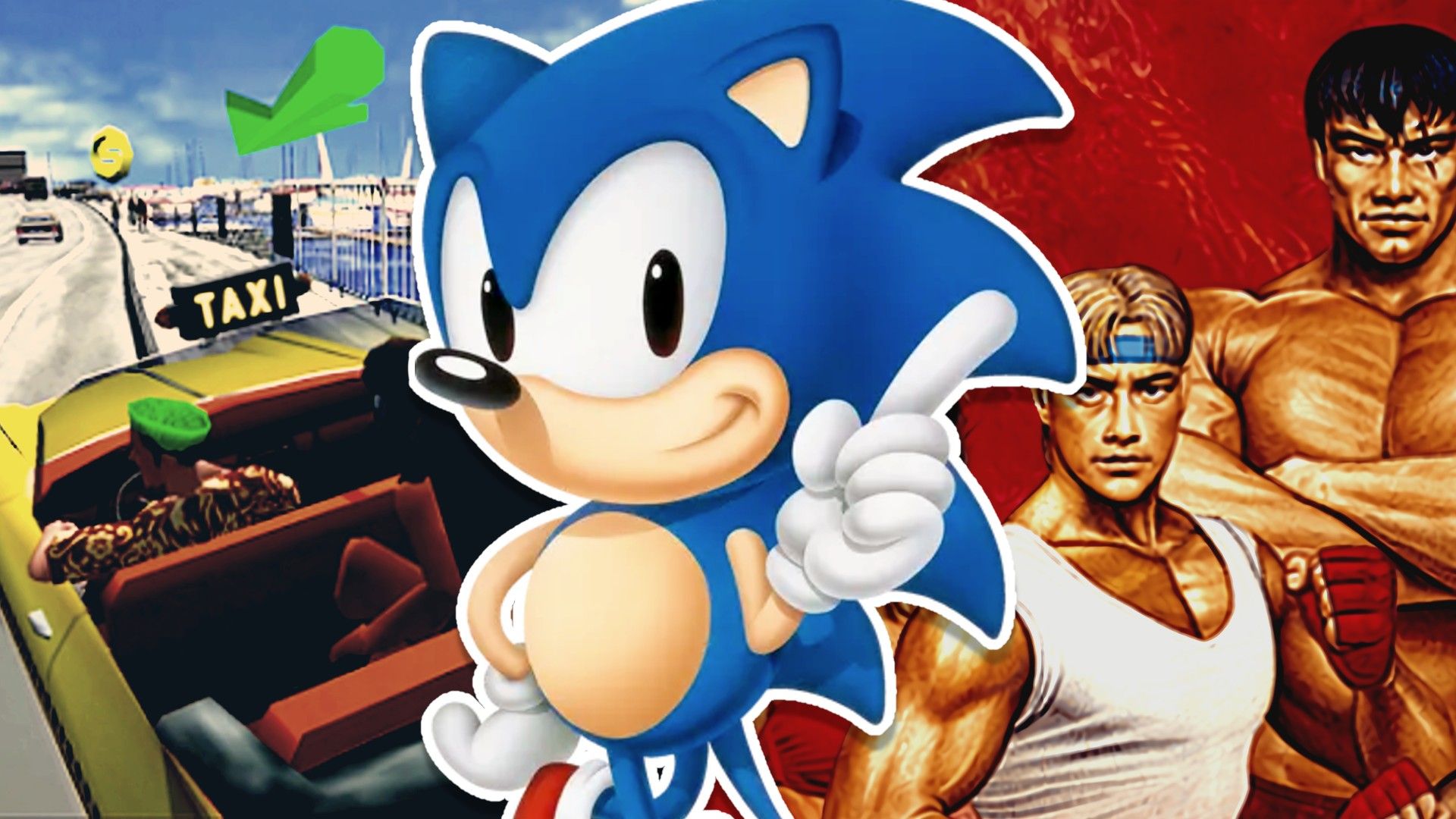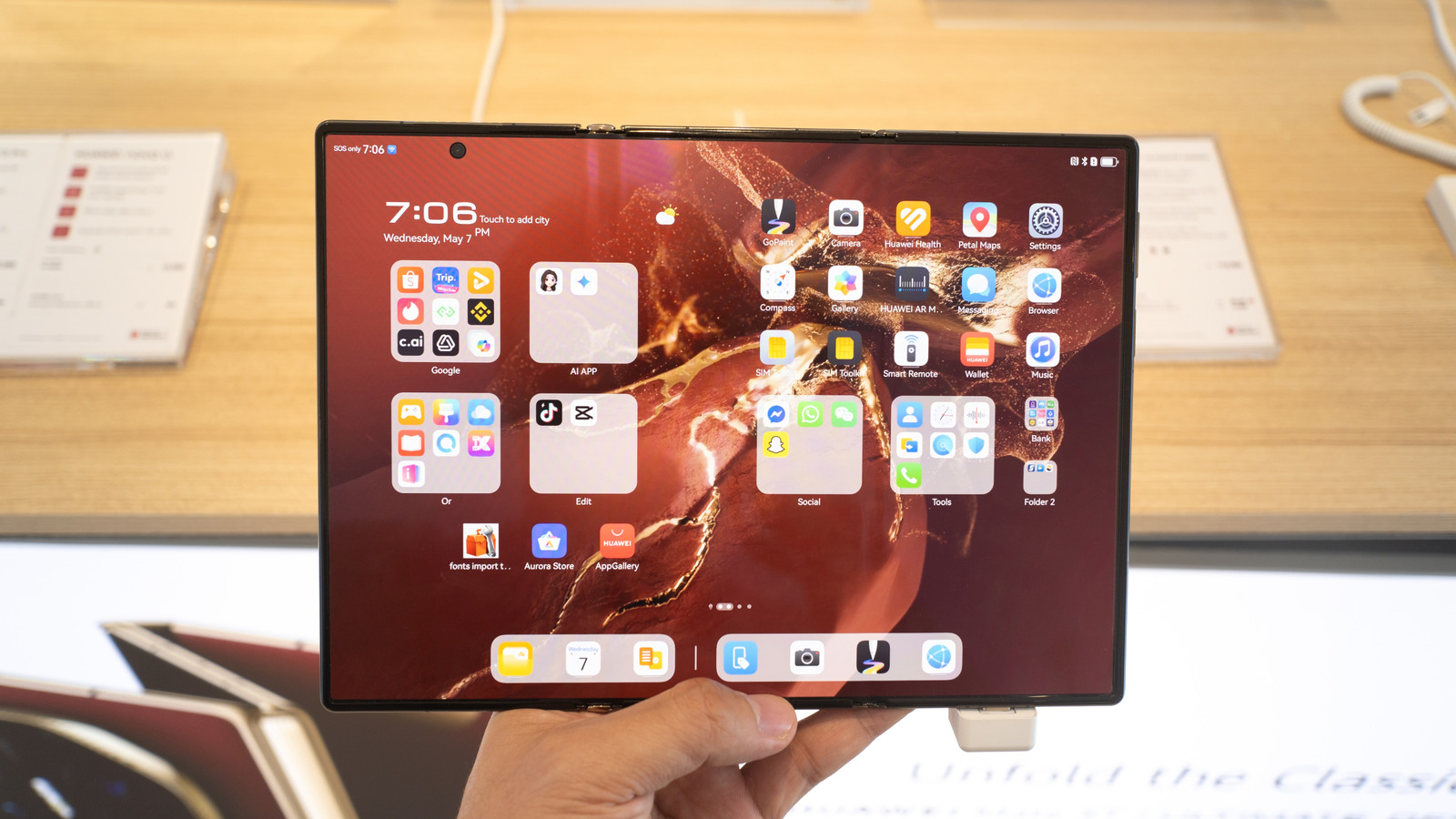Back in 2002, Xbox Live shaped gaming forever by bringing online multiplayer to home consoles, but it wasn’t the first to do so. Before Microsoft, Nintendo, or Sony turned online multiplayer into a standard part of console gaming, Sega had already laid the groundwork for today’s online gaming experiences.
Beginning with the Sega Mega Drive—or “Genesis,” as it’s known in North America—every Sega console up until the Dreamcast (excluding the Sega Pico) has featured online functionality. While there were a few earlier consoles that attempted to support similar online features, such as the Atari 2600 and the Nintendo Famicom, Sega was the first console manufacturer to properly refine this concept. The company pushed online gaming forward in many ways, though these innovations may have arrived too early for their own good.
Sega’s Original Streaming Service Was Ahead of Its Time
In 1990, Sega made its first attempt at providing an online service for consoles with the Sega Mega Modem, a plug-in add-on for the Mega Drive that accomplished just that. Originally released exclusively in Japan and retailing at ¥12,800 (or ¥9,800 without any additional accessories), the Mega Modem connected the console to Sega Meganet, an online subscription service that allowed console owners to play together over dial-up internet for ¥800 per month.
Due to the limitations of the Mega Modem’s 1,200 bps connection speed, there weren’t many Mega Drive games that offered online multiplayer, and the few that did largely consisted of turn-based strategy games and heavily simplified sports games.
The Mega Modem also supported the Mega Anser, another add-on that allowed console owners to access banking information and life insurance info from the comfort of their home—complete with its own keypad and thermal printer. While that sounds like it would have been convenient for anyone who didn’t already own a computer, the ¥34,000 to ¥72,800 price range (depending on the bundle) stopped many Mega Drive owners from investing in an add-on designed to remind them of their poor purchasing decisions.
The real selling point of the Mega Modem was its ability to stream games over Meganet. Similar to modern streaming services like Xbox Game Pass and PlayStation Plus, Meganet connected subscribers to an online game library. Players could access this library and download games from the Sega Game Toshokon cartridge that came bundled with the Mega Modem.
Due to both hardware limitations and the fact that the cartridge could only store one game at a time, most of these games were designed to be short and simple. While this meant the Meganet library was mostly flooded with puzzle games and virtual board games, there were a few standout titles such as Fatal Labyrinth and Flicky—both of which later received physical re-releases.
Despite all its innovations, the Mega Modem was a short-lived failure, with Sega shutting down Meganet in 1993. The add-on struggled to gain traction due to its steep price and lack of enticing games, though this wasn’t helped by the Mega Drive’s initially low sales in Japan. Sega briefly revived the Meganet service in 1995 for Brazil with the addition of basic email and chat functionality.
Sega Channel Nearly Succeeded Where the Mega Modem Failed
Even after the Mega Modem’s failure in Japan, Sega was still committed to the idea of bringing an online streaming service to its consoles. When it came time to bring online gaming to North America in 1994, Sega reworked Meganet into a similar streaming service known as the “Sega Channel.” Unlike Meganet, the Sega Channel was only offered through certain cable providers and didn’t include the Mega Modem’s online multiplayer or banking features.
Instead, the Sega Channel hosted a rotating library of first and third-party Genesis games, including popular retail releases and digital-only titles like Alien Soldier and Golden Axe III. Along with giving players access to fifty games every month (later updated to 70 games rotated on a bi-weekly basis), the Sega Channel also included access to official strategy guides, cheat codes, and demo versions of then-upcoming Genesis games.
Needless to say, the Sega Channel was a massive improvement over Meganet, though it suffered from its own share of problems. Whereas Meganet released too early to take advantage of the Mega Drive’s delayed success, the Sega Channel launched less than a year before Sega would release its next console, the Sega Saturn.
By this time, Genesis owners were more concerned about saving up for the next console generation than playing old games on a console that was already nearing the end of its lifespan. Adding to this problem was the Sega Channel’s hefty $15 monthly subscription fee and the $25 activation fee for its online adapter. Even if you could afford a Sega Channel subscription, the service was only available in select parts of the US and Canada.
Arguably the largest downside to the Sega Channel was its storage limitation. Just like the Mega Modem, the Sega Channel only allowed you to download one game at a time through its adapter. If you tried to turn off the console or download another game, the original game and its save data would be wiped from your console. This may not have been a problem for the short and sweet games of Meganet, but it made it difficult to enjoy the entirety of lengthy RPGs like Phantasy Star II and Shining Force.
Unfortunately, all this meant that Sega Channel proved to be just as successful as the Mega Modem—that is to say, it flopped hard. Against the roughly 18 million Genesis consoles sold in North America (according to VG Chartz), Sega Channel brought in a measly 250,000 subscribers at the peak of its popularity, and that number gradually declined once the Sega Saturn hit the market. Even so, Sega Channel stuck around for a few more years before eventually shutting down in 1998, just a few months before the launch of the Sega Dreamcast in Japan.
Sega Net Link Introduced Internet Browsing to Consoles
Even among diehard Sega fans, the Sega Saturn is often regarded as the black sheep of Sega’s console lineup. Despite boasting groundbreaking hardware and an amazing lineup of console exclusives , the Saturn was mired in controversy from the moment it hit the store shelves.
Its problems ranged from a disastrously mismanaged launch to consistently poor marketing, to internal conflicts at Sega that prevented numerous critically acclaimed games from ever reaching Western territories. If these problems weren’t already enough to sink the Saturn, the console’s $399 launch price wasn’t doing it any favors. At the very least, it inspired one of the most iconic moments to come out of the Electronic Entertainment Expo (E3).
It seemed like Sega was unintentionally sabotaging the Saturn at every turn, yet the company still managed to give the console another innovative online service. In 1996, Sega released the Sega Net Link, an add-on that allowed users to browse the internet on their Saturn, access email, and connect online with other players in a few select titles. The Saturn’s inclusion of a web browser was a first for gaming consoles, though it was notably restrictive. Due to the console’s limited memory, users couldn’t download images or audio files, and certain websites would not display properly.
The Saturn’s online multiplayer was only used in five games: Duke Nukem 3D, Daytona USA, Saturn Bomberman, Sega Rally Championship Plus, and Virtual On: Cyber Troopers. It wasn’t much, but it was still impressive considering most consoles didn’t have any sort of online functionality at the time. These games were also a lot more exciting than the downgraded sports sims and generic board games offered on Meganet.
Sega’s biggest change to its online gaming approach was its pricing. The Net Link abandoned the subscription model of its predecessors, instead requiring a one-time purchase of $199 for permanent access to online multiplayer and web browsing. This change was because Net Link functioned entirely through dial-up internet and peer-to-peer connection, meaning it didn’t rely on servers to stay active. In other words, as long as you and a friend have access to an active dial-up connection, you can still play Saturn games online.
Even with the pricing change and improved online library, the Net Link still ended up being another failure for Sega. Reportedly, less than 1% of Sega Saturn owners bought the Net Link when it first launched, and the add-on only sold around 50,000 units over its total lifetime. The costs and limitations of the early internet, along with the Saturn’s already dismal sales, meant there weren’t many console owners who could take advantage of its online functionality. Additionally, most players of the era chose Sony’s PlayStation or the Nintendo 64 over the Saturn, making it extremely difficult to find anyone who owned a Sega Saturn, Net Link, and another copy of the game you wanted to play.
The Dreamcast Paved the Way for the Online Gaming Era
After three consecutive failed attempts at online gaming, most companies would have thrown in the towel. But Dreamcast-era Sega was bold—stupidly bold. This was the period when Sega was putting out some of its most wonderfully bizarre games, adding creative gimmicks to anything as basic as its memory cards, and dumping more money into Shenmue than it could have ever hoped to recuperate. Everything about the Dreamcast was built on massive risks and lofty ambitions, so it’s no surprise that Sega still hoped that their fourth time would be the charm.
In contrast to Sega’s other consoles, the Dreamcast made it clear that the company was placing all its bets on the future of online gaming. The Dreamcast was the first home console to include a built-in modem, which was initially used to download free DLC (another first for consoles) from the system’s web browser. However, the modem’s main purpose was to support the Dreamcast’s online multiplayer. Previous Sega consoles hardly took advantage of their online capabilities, but that’s another way in which the Dreamcast differed from its predecessors.
The Dreamcast supported online multiplayer in over 80 games (most of which were only supported in Japan, admittedly), with some games like ChuChu Rocket! and Crazy Taxi 2 allowing players to share custom levels or upload their high scores to online leaderboards. Arguably the greatest showcase of the console’s online functionality was Phantasy Star Online, which was the very first MMO on consoles and often regarded as one of the best games in the genre.
As part of its online multiplayer push, Sega sought to bring the Dreamcast’s online features to as many parts of the world as possible. However, the console’s reliance on dial-up internet meant Sega had to partner with local internet companies to create unique services for different international territories. After launching the console’s online subscription service in Japan under the name “Dricas” in 1998, Sega later brought the service to Europe as “Dreamarena” in ’99, then to Australia as “Commas” in 2000, and finally launched in the United States as “Seganet” that same year.
Despite its hefty subscription fee—charging $21 per month in the US and similarly high prices in other regions—the Dreamcast still garnered the largest online playerbase in Sega’s history, reaching around 1.55 million users worldwide only a month after its US release.
However, as was the case for every other Sega console, the Dreamcast’s online features didn’t last for long. Even with its moderate success, the online subscriptions weren’t enough to save Sega from its other problems. The failure of the Saturn, the underperformance of the Dreamcast, and the financial loss caused by the record-breaking development costs of Shenmue had sealed Sega’s fate. Sega eventually removed the subscription fee, making the online multiplayer free to all Dreamcast owners until the servers were officially shut down in 2003.
However, that’s only half of the Dreamcast’s story. Whereas the console represented one last hurrah for Sega, it also marked Microsoft’s first foray into console gaming. In 1998, the two companies had collaborated to develop a Dreamcast-compatible version of Windows CE, allowing game developers to use Microsoft’s OS as an alternative to the more complicated development tools provided by Sega. This partnership continued into the creation of Seganet, but Microsoft left the project after creative disagreements, and the announcement of the Xbox caused a split between the two companies.
Although Microsoft’s collaboration with Sega was short-lived, its influence can still be seen on the Xbox. Much like the Dreamcast, the original Xbox was always meant to support online multiplayer across a wide selection of games. However, whereas the Dreamcast was stuck with the limitations of dial-up internet (at least, until Sega released a broadband add-on in 2001) and a reliance on memory cards, Microsoft aimed to avoid these issues by launching the Xbox with built-in broadband support, an Ethernet port, and a hard-disk drive.
While the broadband requirement meant the Xbox’s online multiplayer wasn’t as accessible as the Dreamcast—at least for its first few years—it allowed Microsoft to add other features such as voice chat and international online multiplayer. Unsurprisingly, after Sega dropped out of the console market, it re-released many of its former Dreamcast exclusives on the Xbox, including Shenmue 2 and Phantasy Star Online. While I won’t go as far as to call the Xbox a “better Dreamcast,” it undoubtedly improved on Sega’s online innovations in every way.
Xbox Live revolutionized online console gaming forever, but it still owes much of its success to Sega. Even after repeatedly failing to bring online console multiplayer to the mainstream, Sega never gave up on the idea and continued to build on its work with each new system. By the time it launched Seganet on the Dreamcast, Sega had almost perfected its online ambitions. All that was missing was the foresight to bring its online innovations into the broadband era, but Microsoft was happy to fulfill this role with Xbox Live.
Sega’s Online Legacy Lives On
Modern consoles have evolved far beyond the unpolished online experiences of Sega’s consoles, but that hasn’t made these early attempts any less important to gaming history. Sega’s subscription services weren’t just a monumental influence on future game consoles, they were also a defining part of many Sega fans’ childhoods. Fortunately, most of these services are still playable today.
The Dreamcast has seen numerous fan efforts to restore different parts of its online library, ranging from privately-run servers for beloved games like Phantasy Star Online to a fan-made remake of Shenmue Passport. Plus, there are now multiple Dreamcast emulators with online support. Even the limited-time DLC for many Dreamcast games has been dumped online, meaning you can revisit these games with all the bonuses players enjoyed while the official servers were still online.
Sega Netlink is even more accessible thanks to the original’s peer-to-peer design. Fans have also found ways to use Sega Net Link without relying on a dial-up connection, making it easier than ever to revisit the Saturn’s small, yet stellar collection of online multiplayer titles.
Even Meganet and the Sega Channel have been partially restored through mods to their respective consoles. YouTuber 8-Bit Flashback created a guide showcasing how to restore functionality to a Sega Channel adapter, allowing you to browse the service’s catalog and enjoy its full selection of games. As for Meganet, while there’s no way to fully revisit its streaming service, some of the Meganet-exclusive games are still playable on modern emulators.
If it wasn’t for Sega and its self-destructive passion for pushing consoles forward, we likely wouldn’t have all the amazing online experiences available today. While Microsoft and Sony arguably perfected these ideas, no one deserves more credit for revolutionizing online console gaming than Sega.















